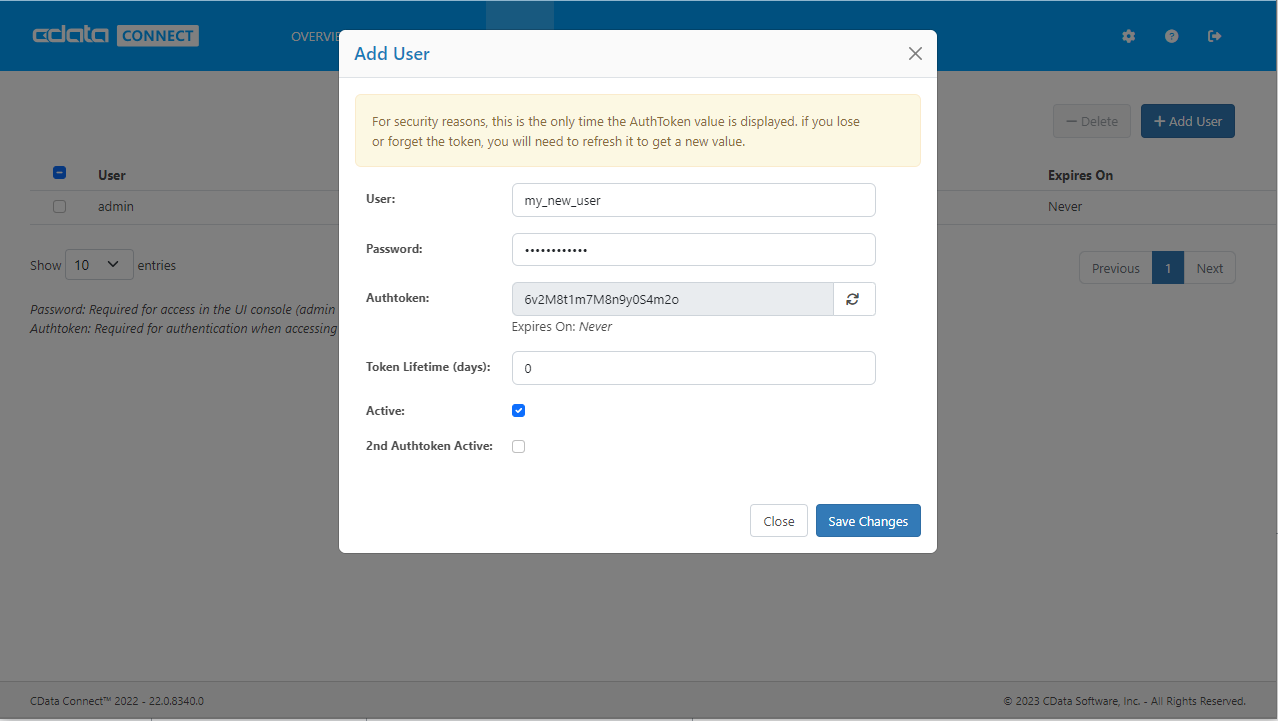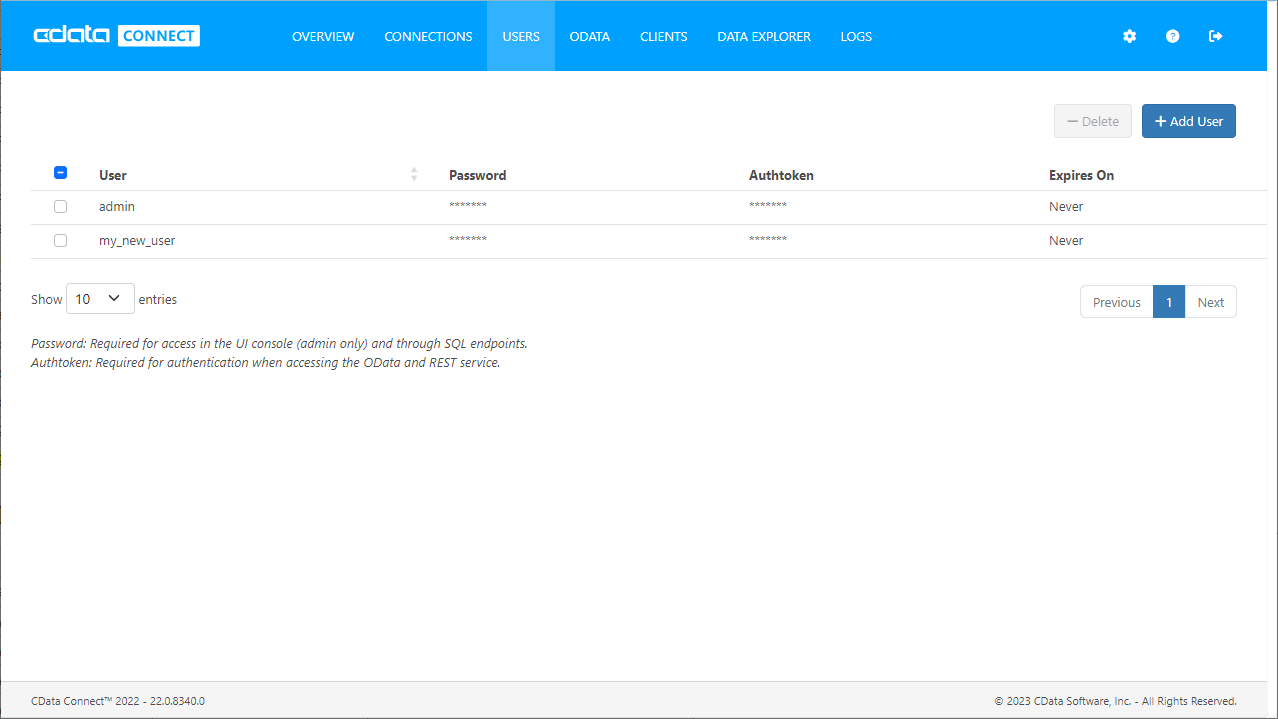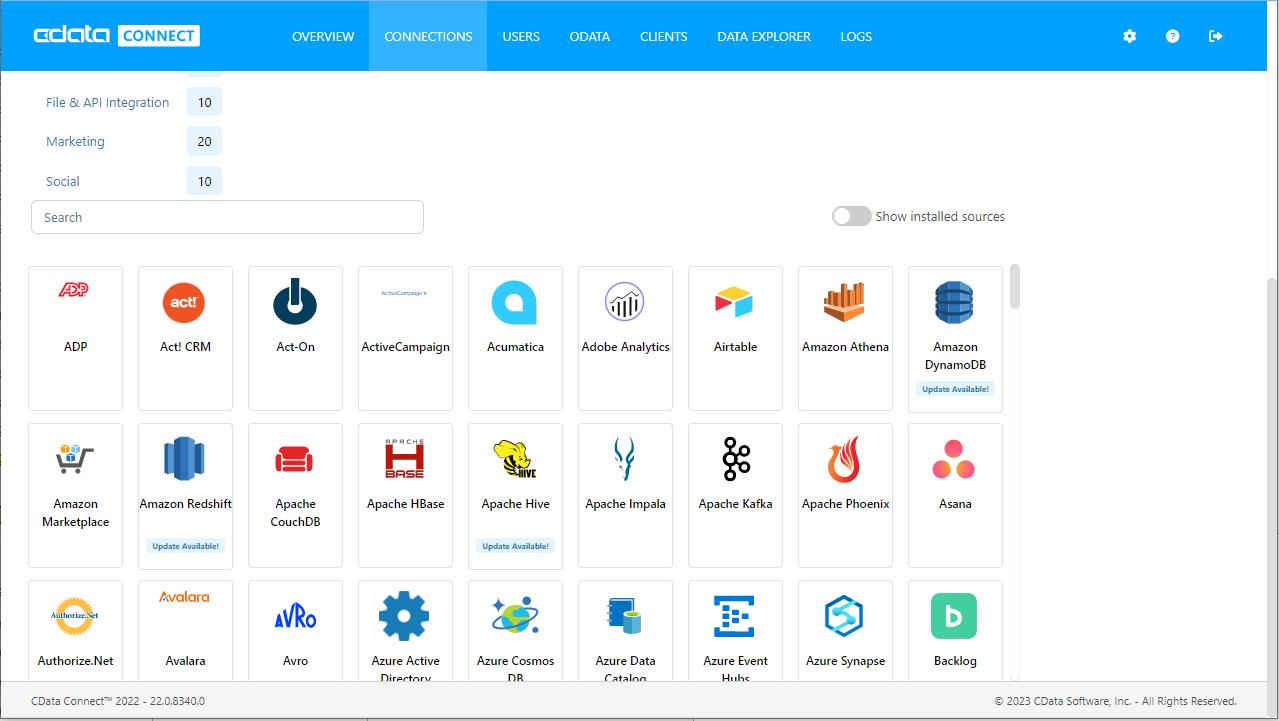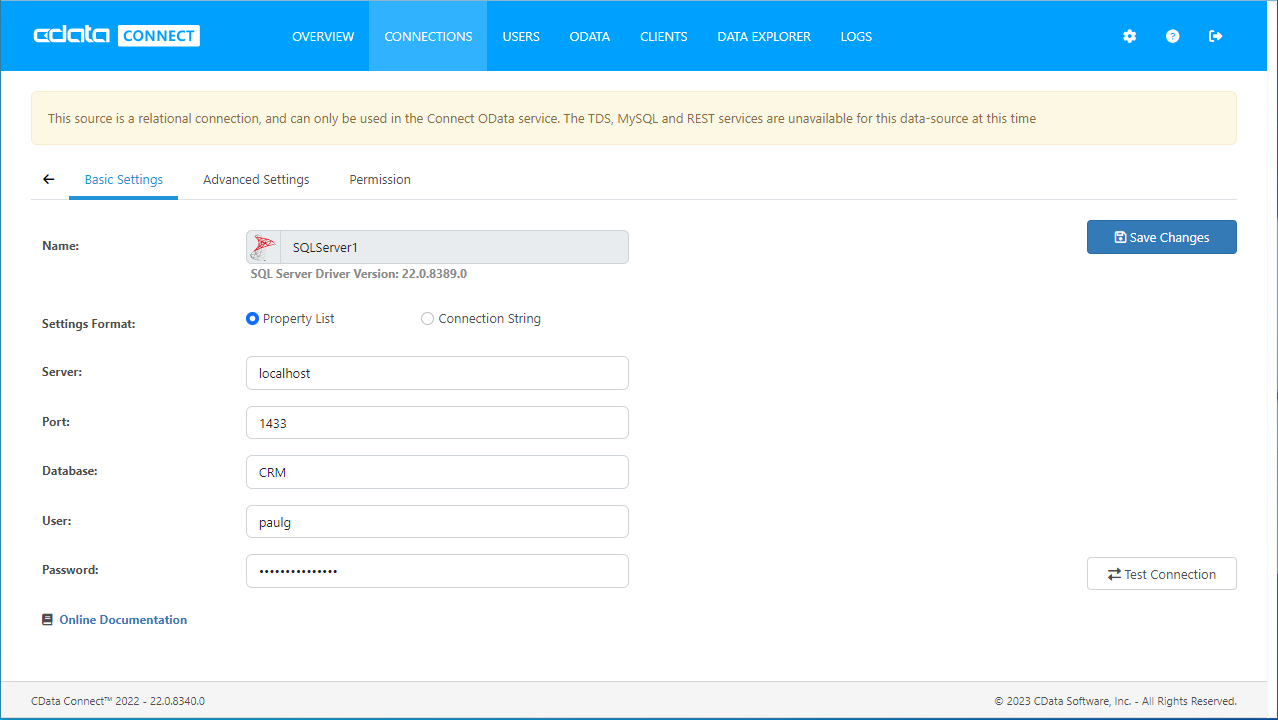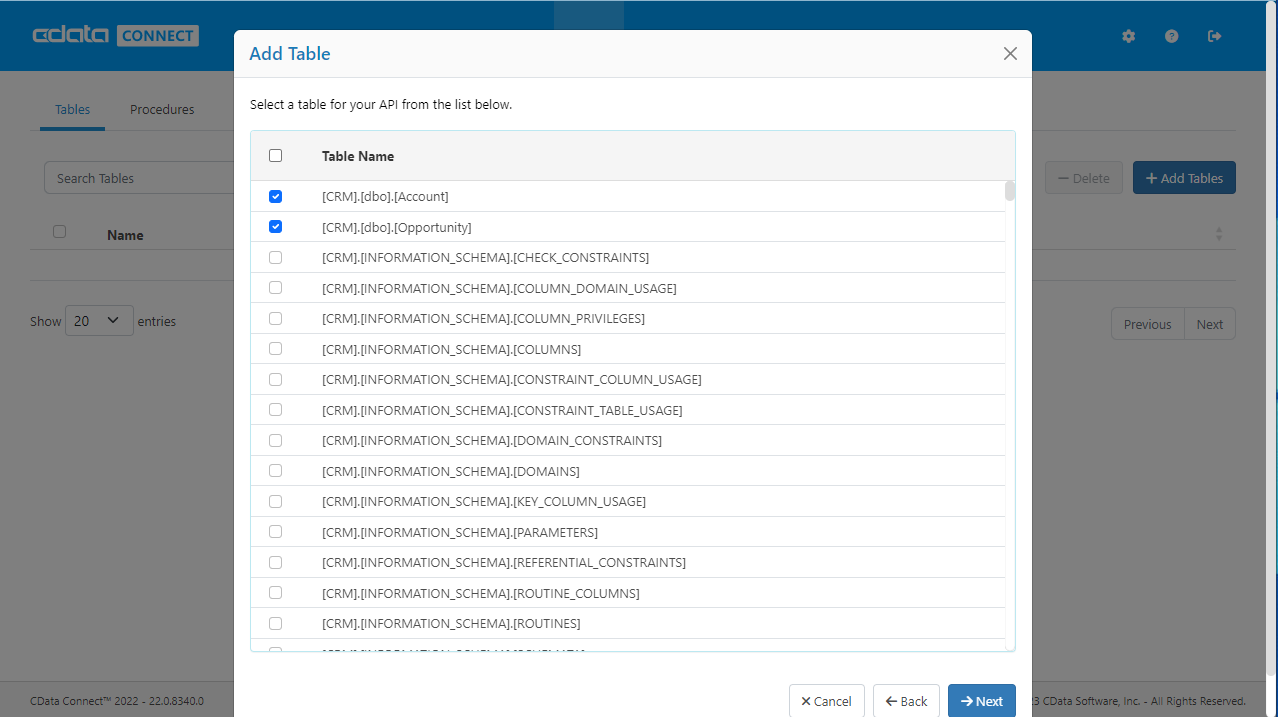Discover how a bimodal integration strategy can address the major data management challenges facing your organization today.
Get the Report →Using AngularJS to Build Dynamic Web Pages with Confluence Data
Use the CData Connect Server to create Confluence OData feeds and build single-page applications with live Confluence data.
AngularJS (Angular) is a structural framework for dynamic web apps and can be paired with CData Connect Server to build single-page applications (SPAs) with access to live data from Confluence. The CData Connect Server creates a virtual database for Confluence and can be used to generate an OData API (natively consumable from Angular) for Confluence. This article will walk through setting up CData Connect Server and creating a simple SPA that has live access to Confluence data. The SPA will dynamically build and populate an HTML table.
Connect to Confluence from AngularJS
To work with live Confluence data in our Angular app, we need to connect to Confluence from Connect Server, provide user access to the new virtual database, and create OData endpoints for the Confluence data.
Add a Connect Server User
Create a User to connect to Confluence from Angular through Connect Server.
- Click Users -> Add
- Configure a User
![Creating a new user]()
- Click Save Changes and make note of the Authtoken for the new user
![Connect Server users]()
Connect to Confluence from Connect Server
CData Connect Server uses a straightforward, point-and-click interface to connect to data sources and generate APIs.
- Open Connect Server and click Connections
![Adding a connection]()
- Select "Confluence" from Available Data Sources
- Enter the necessary authentication properties to connect to Confluence.
Obtaining an API Token
An API token is necessary for account authentication. To generate one, login to your Atlassian account and navigate to API tokens > Create API token. The generated token will be displayed.
Connect Using a Confluence Cloud Account
To connect to a Cloud account, provide the following (Note: Password has been deprecated for connecting to a Cloud Account and is now used only to connect to a Server Instance.):
- User: The user which will be used to authenticate with the Confluence server.
- APIToken: The API Token associated with the currently authenticated user.
- Url: The URL associated with your JIRA endpoint. For example, https://yoursitename.atlassian.net.
Connect Using a Confluence Server Instance
To connect to a Server instance, provide the following:
- User: The user which will be used to authenticate with the Confluence instance.
- Password: The password which will be used to authenticate with the Confluence server.
- Url: The URL associated with your JIRA endpoint. For example, https://yoursitename.atlassian.net.
![Configuring a connection (SQL Server is shown).]()
- Click Save Changes
- Click Privileges -> Add and add the new user (or an existing user) with the appropriate permissions (SELECT is all that is required for Angular).
Add Confluence OData Endpoints in Connect Server
After connecting to Confluence, create OData Endpoints for the desired table(s).
- Click OData -> Tables -> Add Tables
- Select the Confluence database
- Select the table(s) you wish to work with and click Next
![Selecting a Table (SQL Server is shown)]()
- (Optional) Edit the resource to select specific fields and more
- Save the settings
(Optional) Configure Cross-Origin Resource Sharing (CORS)
When accessing and connecting to multiple domains from an application such as Ajax, there is a possibility of violating the limitations of cross-site scripting. In that case, configure the CORS settings in OData -> Settings.
- Enable cross-origin resource sharing (CORS): ON
- Allow all domains without '*': ON
- Access-Control-Allow-Methods: GET, PUT, POST, OPTIONS
- Access-Control-Allow-Headers: Authorization
Save the changes to the settings.
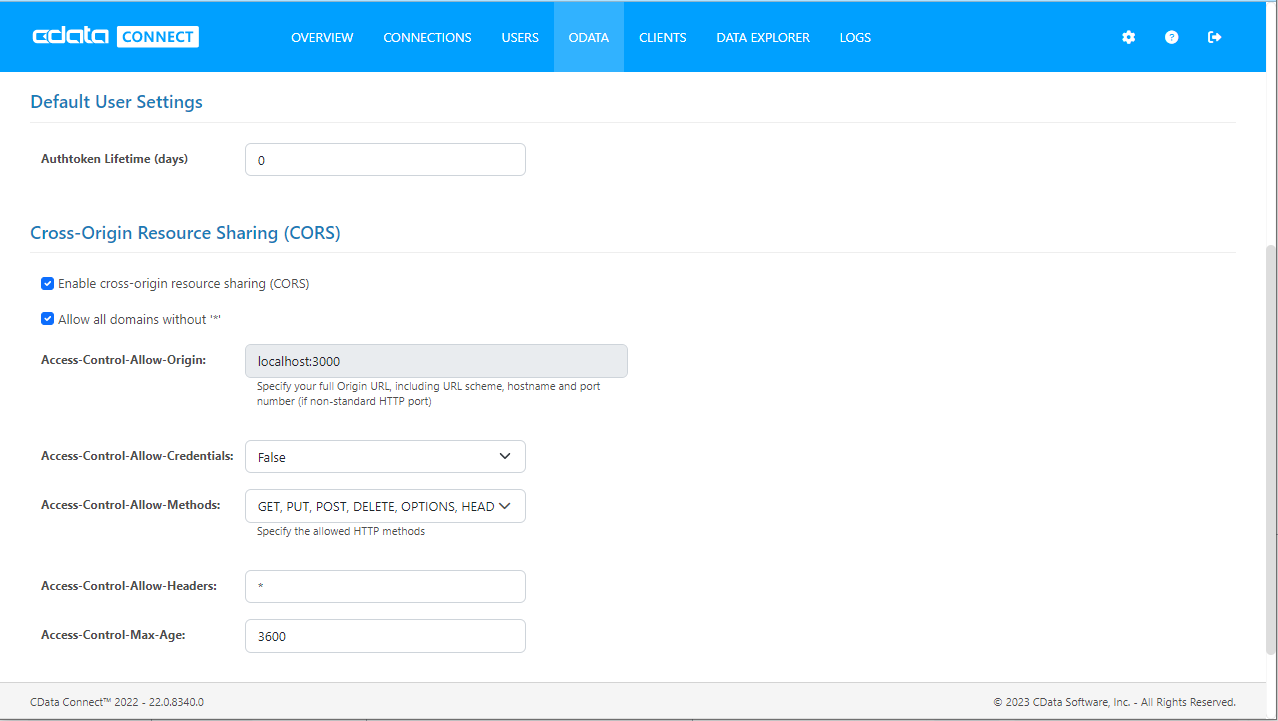
Sample URLs for OData Feeds
Once you have configured a connection to Confluence, created a user, and created OData endpoints in Connect Server, you can access OData feeds for Confluence data. Below, you will see the URLs to access tables and the list of tables. For information on accessing the tables, you can navigate to the API page for Connect Server (click the API link on the top right of Connect Server Web page). For the URLs, you will need the URL of Connect Server, likely in the form: CONNECT_SERVER_URL/. Since we are working with Angular, we will append the @json parameter to the end of URLs that do not return JSON data by default.
| Table | URL | |
|---|---|---|
| Entity (table) List | CONNECT_SERVER_URL/api.rsc/ | |
| Metadata for table Pages | CONNECT_SERVER_URL/api.rsc/Pages/$metadata?@json | |
| Pages | CONNECT_SERVER_URL/api.rsc/Confluence_Pages |
As with standard OData feeds, if you wish to limit the fields returned, you can add a $select parameter to the query, along with other standard OData URL parameters, such as $filter, $orderby, $skip, and $top. See the help documentation for more information on supported OData queries.
Building a Single Page Application
With the setup for Connect Server completed, we are ready to build our SPA. Since this is a simple demonstration, we will include all of our CSS, scripting, and Angular controllers in a single file, deliberately not engaging the functionality provided by AngularJS services, factories, and custom directives.
CSS Definitions & Importing AngularJS Libraries
To start, create some CSS rulesets to modify the table, th, td, and tr elements to format the tables of data. We also need to import the AngularJS libraries for use in our SPA.
<style>
table, th, td {
border: 1px solid grey;
border-collapse: collapse;
padding: 5px;
}
table tr:nth-child(odd) {
background-color: #f1f1f1;
}
table tr:nth-child(even) {
background-color: #ffffff;
}
</style>
<script src="https://ajax.googleapis.com/ajax/libs/angularjs/1.7.8/angular.min.js"></script>
Creating & Referencing the Angular App and Controller Objects
Next, add the ng-app and ng-controller directives in the HTML body tag, since the body is the only place we will be using Angular. Then, at the end of the HTML body, we will create the script tag, in which we will create and define the Angular app and controller.
<body ng-app="DataApp" ng-controller="SimpleController">
...
<script>
var app = angular.module('DataApp', []);
app.controller('SimpleController', function($scope, $http) {
//we will add code here
});
</script>
</body>
Defining Our Controller
Our controller for this example will consist of three functions: init to initialize our Angular objects and set up the SPA, getTableColumns to retrieve the columns for a selected table, and getTableData to retrieve data for the selected fields from the selected column. The first action we take when creating the controller is to call the init function. All other functions will be called as needed and it is in these function calls that we make the required HTTP GET calls to Connect Server to retrieve Confluence data.
init();
/*
* Initialize the data object, which will be used with Angular to
* build the different parts of our SPA and to retrieve data from
* Connect Server.
*/
function init() {
$scope.data = {
availableTables: [],
availableColumns: [],
selectedTable: {},
tableData: []
};
/*
* Call to Connect Server to get the list of Tables, select the
* first table by default, and retrieve the available columns.
*
* The call to Connect Server returns standard OData, so the
* data we need is in the value object in the JSON returned.
*/
$http.get("CONNECT_SERVER_URL/api.rsc",{headers: {"x-cdata-authtoken": "MyAuthtoken"}})
.then(function (response) {
$scope.data.availableTables = response.data.value;
$scope.data.selectedTable = $scope.data.availableTables[0];
$scope.getTableColumns();
});
}
/*
* Call to Connect Server to get the list of columns for the
* selected table.
*
* The data returned here is not standard OData, so we drill
* down into the response to extract exactly the data we need
* (an array of column names).
*
* With the column names retrieved, we will transform the array
* of column names into an array of objects with a name and Id
* field, to be used when we build an HTML select.
*/
$scope.getTableColumns = function () {
$scope.data.tableData = [];
$scope.data.selectedColumns = [];
table = $scope.data.selectedTable.url;
if (table != "") {
$http.get("CONNECT_SERVER_URL/api.rsc/" + table + "/$metadata?@json", {headers: {"x-cdata-authtoken": "MyAuthtoken"}})
.then(function (response) {
$scope.data.availableColumns = response.data.items[0]["odata:cname"];
for (i = 0; i < $scope.data.availableColumns.length; i++) {
$scope.data.availableColumns[i] = { id: i, name: $scope.data.availableColumns[i] };
}
});
}
}
/*
* Call to Connect Server to get the requested data. We get the data
* based on the table selected in the associated HTML select.
* Then we create a comma-separated string of the selected columns.
*
* With the table and columns known, we can make the appropriate call
* to Connect Server. Because the driver returns standard OData, the
* table data is found in the value field of the response.
*/
$scope.getTableData = function () {
table = $scope.data.selectedTable.url;
columnsArray = $scope.data.selectedColumns;
columnString = "";
for (i = 0; i < columnsArray.length; i++) {
if (columnString != "") {
columnString += ",";
}
columnString += columnsArray[i].name;
}
if (table != "") {
$http.get("CONNECT_SERVER_URL/api.rsc/" + table + "?$select=" + columnString, {headers: {"x-cdata-authtoken": "MyAuthtoken"}})
.then(function (response) { $scope.data.tableData = response.data.value; });
} else {
$scope.data.tableData = [];
}
}
Building the Webpage
With our Controller defined, we are now ready to build our webpage using Angular. There are four major parts in our simple page: a select box to choose a table, a select (multiple) box to choose columns, a button to retrieve data, and a table to display the data. We will walk through these four parts one at a time, explaining the use of Angular as we go.
Select a Table
In the first select element, we use the ng-options directive to iterate through the available tables (retrieved from the init function mentioned earlier) and populate our select element. With the ng-model directive, we assign the value of the selected option to the data.selectedTable field. If the selected table ever changes, the getTableColumns function is called to repopulate the available columns.
<label>Select a Table</label>
<br />
<select name="tableDropDown" id="tableDropDown"
ng-options="table.name for table in data.availableTables track by table.url"
ng-model="data.selectedTable"
ng-change="getTableColumns()">
</select>
Select Columns
In the second select element, we again use the ng-options directive, but this time to iterate through the available columns (as retrieved by the getTableColumns function). For the sake of usability, the columns are sorted by name before populating the select element. Since this select contains the multiple attribute, you can select more than one column. Each selected column is added to the data.selectedColumns array. You will notice that as you select columns, a table header for each column is created (see the data table section below).
<label>Select Columns</label>
<br />
<select name="columnMultiple" id="columnMultiple"
ng-options="column.name for column in data.availableColumns | orderBy:'name' track by column.id"
ng-model="data.selectedColumns"
multiple>
</select>
Get Table Data
In this button, we simply make a call to the getTableData function whenever the button is clicked. You will notice that we use the ng-disabled directive to disable the button whenever the user has not selected any columns. We also dynamically update the text of the button with the name of the selected table.
<button name="getTableData" id="btnGetTableData"
ng-click="getTableData()"
ng-disabled="data.selectedColumns.length == 0">
Get {{data.selectedTable.name}} Data
</button>
Display the Table Data
This section satisfies the end goal of our SPA, to display the data from the selected table. To do so, we use several ng-repeat directives: one to iterate through the selected columns and create table headers, one to iterate through the rows of data returned, and a last one to iterate through the selected columns and display the corresponding data for a given row of data.
By using Angular, we are able to dynamically determine which columns to display. It is worth noting that only those columns selected *before* the button was clicked will contain data. But it is a simple task to select all of the available columns, click the button to get the table data, and then go back and select/deselect different columns to change the data that is displayed. If you change the selected table, then all of the data will be cleared.
<table>
<tr>
<th ng-repeat="column in data.selectedColumns | orderBy:'name'">{{column.name}}</th>
</tr>
<tr ng-repeat="row in data.tableData">
<td ng-repeat="column in data.selectedColumns">{{ row[column.name] }}</td>
</tr>
</table>
Complete App
<!DOCTYPE html>
<html>
<style>
table, th, td {
border: 1px solid grey;
border-collapse: collapse;
padding: 5px;
}
table tr:nth-child(odd) {
background-color: #f1f1f1;
}
table tr:nth-child(even) {
background-color: #ffffff;
}
</style>
<script src="https://ajax.googleapis.com/ajax/libs/angularjs/1.7.8/angular.min.js"></script>
<body ng-app="DataApp" ng-controller="SimpleController">
<label>Select a Table</label>
<br>
<select name="tableDropDown" id="tableDropDown"
ng-options="table.name for table in data.availableTables track by table.url"
ng-model="data.selectedTable"
ng-change="getTableColumns()">
</select>
<br>
<br>
<label>Select Columns</label>
<br>
<select name="columnMultiple" id="columnMultiple"
ng-options="column.name for column in data.availableColumns | orderBy:'name' track by column.id"
ng-model="data.selectedColumns"
multiple>
</select>
<br>
<br>
<button name="getTableData" id="btnGetTableData"
ng-click="getTableData()"
ng-disabled="data.selectedColumns.length == 0">
Get {{data.selectedTable.name}} Data
</button>
<br>
<br>
<table>
<tr>
<th ng-repeat="column in data.selectedColumns | orderBy:'name'">{{column.name}}</th>
</tr>
<tr ng-repeat="row in data.tableData">
<td ng-repeat="column in data.selectedColumns">{{ row[column.name] }}</td>
</tr>
</table>
<script>
var app = angular.module('DataApp', []);
app.controller('SimpleController', function($scope, $http) {
init();
/*
* Initialize the data object, which will be used with Angular to
* build the different parts of our SPA and to retrieve data from
* Connect Server.
*/
function init() {
$scope.data = {
availableTables: [],
availableColumns: [],
selectedTable: {},
tableData: []
};
/*
* Call to Connect Server to get the list of tables, select the
* first table by default, and retrieve the available columns.
*
* The call to Connect Server returns standard OData, so the
* data we need is in the value object in the JSON returned.
*/
$http.get("CONNECT_SERVER_URL/api.rsc",{headers: {"x-cdata-authtoken": "MyAuthtoken"}})
.then(function (response) {
$scope.data.availableTables = response.data.value;
$scope.data.selectedTable = $scope.data.availableTables[0];
$scope.getTableColumns();
});
}
/*
* Call to Connect Server to get the list of columns for the
* selected table.
*
* The data returned here is not standard OData, so we drill
* down into the response to extract exactly the data we need
* (an array of column names).
*
* With the column names retrieved, we will transform the array
* of column names into an array of objects with a name and Id
* field, to be used when we build an HTML select.
*/
$scope.getTableColumns = function () {
$scope.data.tableData = [];
$scope.data.selectedColumns = [];
table = $scope.data.selectedTable.url;
if (table != "") {
$http.get("CONNECT_SERVER_URL/api.rsc/" + table + "/$metadata?@json", {headers: {"x-cdata-authtoken": "MyAuthtoken"}})
.then(function (response) {
$scope.data.availableColumns = response.data.items[0]["odata:cname"];
for (i = 0; i < $scope.data.availableColumns.length; i++) {
$scope.data.availableColumns[i] = { id: i, name: $scope.data.availableColumns[i] };
}
});
}
}
/*
* Call to Connect Server to get the requested data. We get the data
* based on the table selected in the associated HTML select.
* Then we create a comma-separated string of the selected columns.
*
* With the table and columns known, we can make the appropriate call
* to Connect Server. Because the driver returns standard OData, the
* table data is found in the value field of the response.
*/
$scope.getTableData = function () {
table = $scope.data.selectedTable.url;
columnsArray = $scope.data.selectedColumns;
columnString = "";
for (i = 0; i < columnsArray.length; i++) {
if (columnString != "") {
columnString += ",";
}
columnString += columnsArray[i].name;
}
if (table != "") {
$http.get("CONNECT_SERVER_URL/api.rsc/" + table + "?$select=" + columnString, {headers: {"x-cdata-authtoken": "MyAuthtoken"}})
.then(function (response) { $scope.data.tableData = response.data.value; });
} else {
$scope.data.tableData = [];
}
}
});
</script>
</body>
</html>
Free Trial & More Information
If you are interested in connecting to your Confluence data (or data from any of our other supported data sources) from web applications built with Angular, sign up for a free trial of the CData Connect Server today! For more information on Connect Server and to see what other data sources we support, refer to our CData Connect page.






